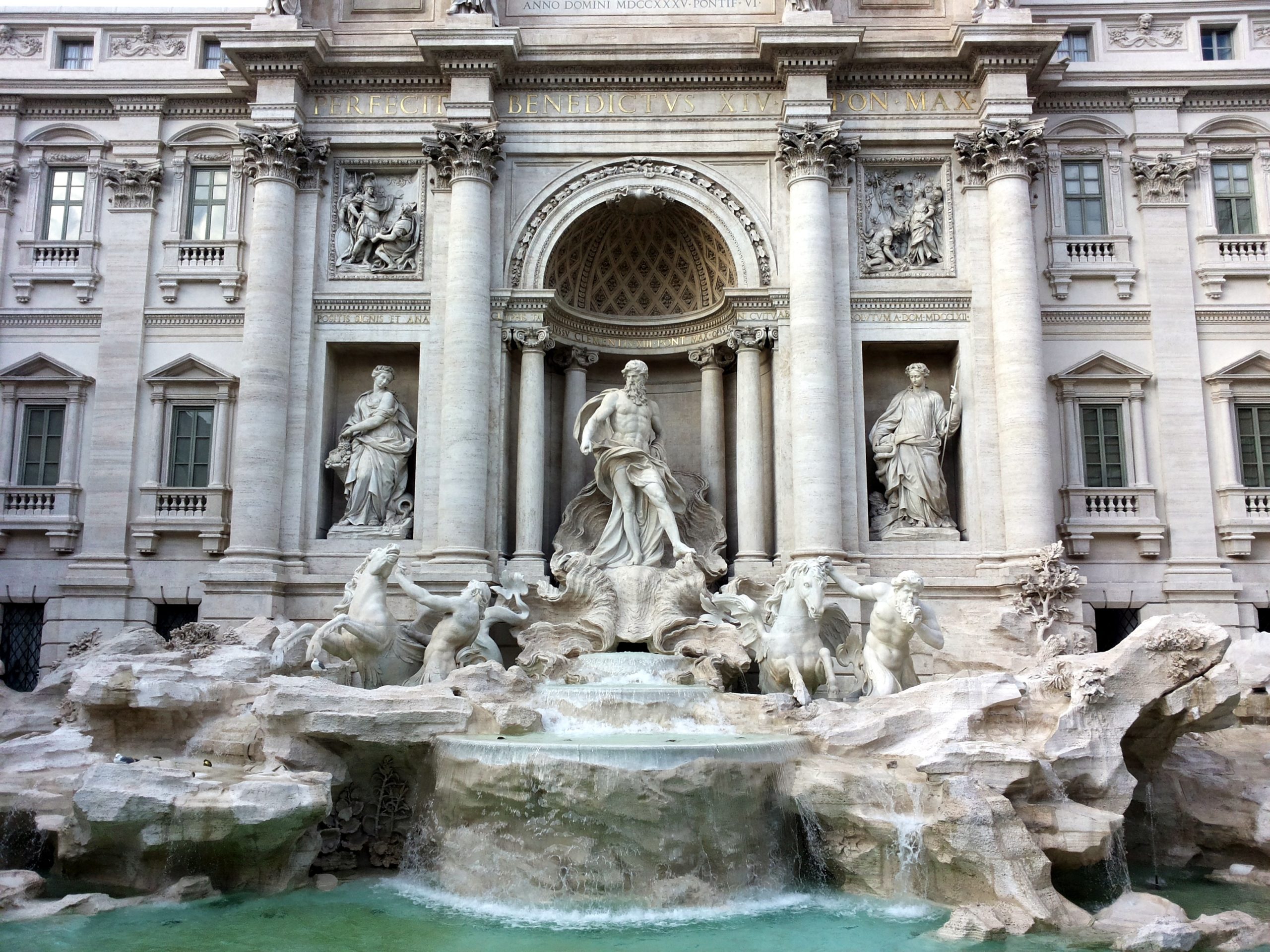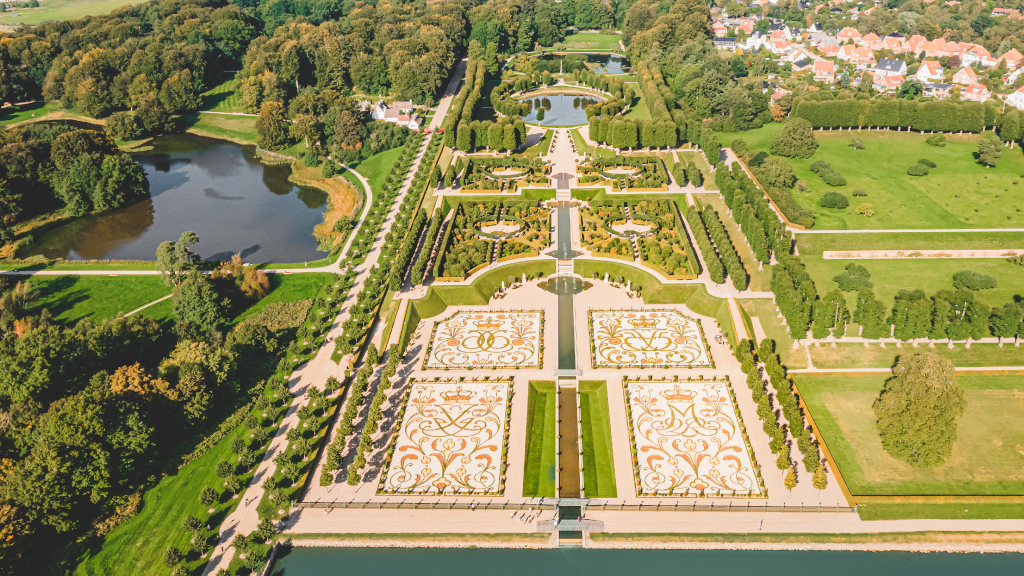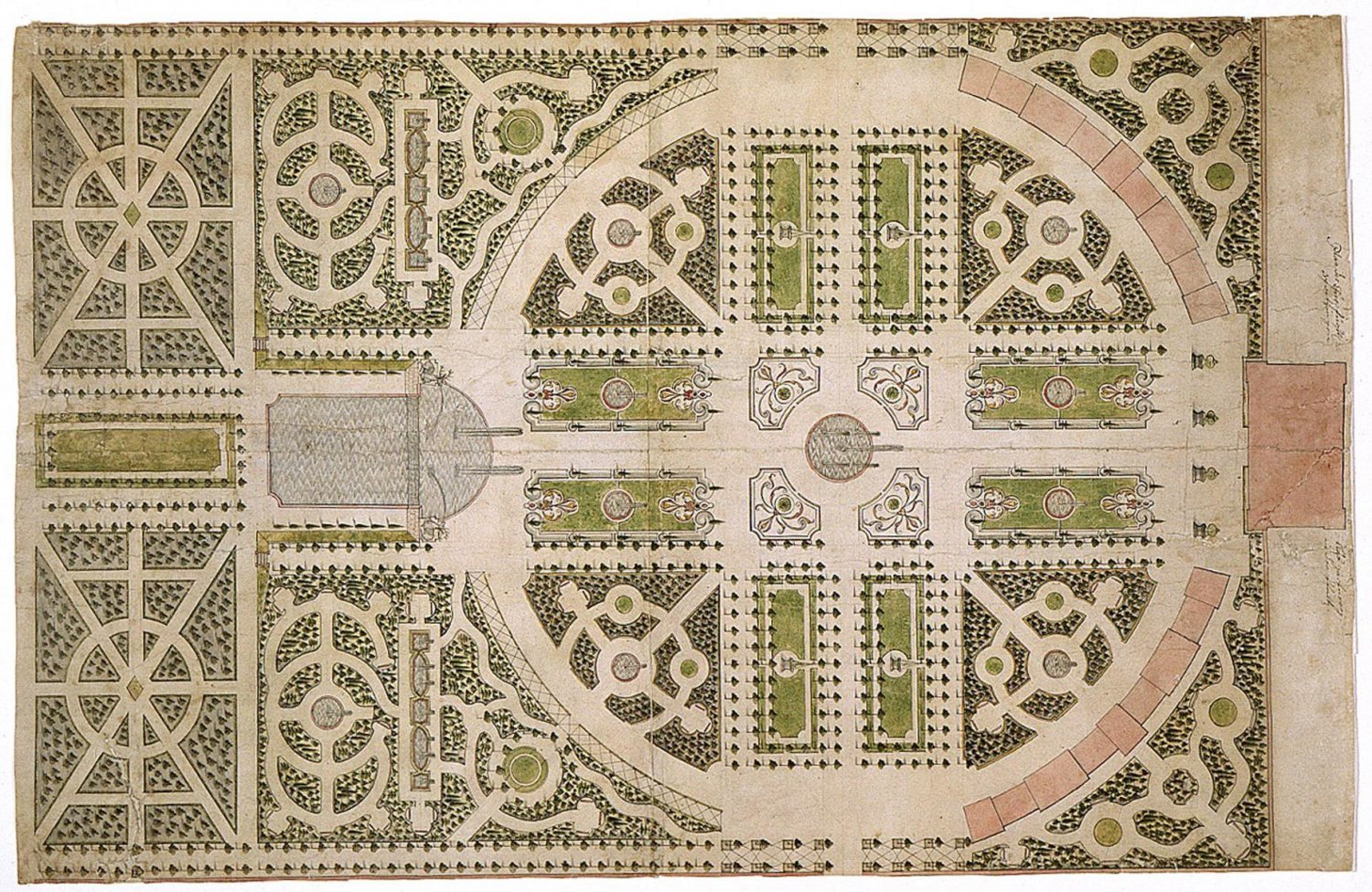
The Villa Lante / Italian Gardens of the Renaissance
The design and decoration of the Baroque garden depended not only on the natural environment, ranging from sunny Italian hills to wet Dutch flatlands, but also on artistic and economic considerations. Moreover, seventeenth-century explorations of the world seas and subsequent advances in natural history and botanical sciences directly affected.

Aerial view, Kamp Abbey with terrace garden and cloister garden, Kamp
The Baroque garden was a style of garden based upon symmetry and the principle of imposing order on nature.. Pirro Ligorio, was commissioned in the same year to design an even more ambitious garden, Villa d'Este, for the Cardinal Ippolito II d'Este (1509-1572). This garden was designed on a steep hillside, which could be viewed from the.

Baroque Garden Garden, Baroque, Around the worlds
25th September 2014. The Baroque Gardens at Blenheim Palace, Oxfordshire Photo: Shutterstock. The baroque garden style began appearing in Britain during the Stuart era (1603-1714) and was influenced by contemporary French and Dutch styles of gardening. Find out how and why 17th-century gardens went formal, fancy and supersized.

Versailles, Photo, Art inspiration
It is not by chance that surveys of garden history often group the Renaissance and the Baroque together and that geographical categories take precedence over periodization in such publications. 16 In formal-aesthetic terms, the Frascati gardens are often presented as the starting point of baroque garden design. 17 The distinguishing feature of.

Barockgarten
Baroque garden architects were especially keen on using layering in a form of terraces, cascading waterfalls and varying hights of trees and plants. One must keep in mind that such features require great engineering knowledge and the costs involved are astronomical. Not surprisingly, these elements were not used on a regular basis in medieval.

Barok Bahçe Sanatı ve Barok Bahçelerinin Önemli Örnekleri PeyzaX
Gammel Holtegaard's beautiful Baroque garden formed the framework for the Pavilion I-III - New Architecture in the Baroque Garden trilogy of exhibitions presented in 2015, 2016, and 2017, supported by The Danish Arts Foundation and The Obel Family Foundation.. Dual Design team: Sofia Adolfsson (S), Teresa Fernández Rojo (T), Camila.

Top 25 Examples of Baroque Architecture Architecture of Cities
17th- and 18th-century French. The French invasions of Italy in the last quarter of the 16th and first quarter of the 17th centuries introduced to France the idioms of the Italian garden.The first garden coordinated with a dwelling appeared at the château of Anet (1547-56) and was designed by the architect Philibert Delorme, but, despite its evident sophistication, it remained an inward.

baroque garden design & plan YouTube
* High Baroque Style 1650 . See Style Chart. Use: Baroque gardens were for show. High society gathered to admire and participate in the theatricality. Like a play, the garden was incomplete without an audience. It was also a physical expression of the owner's power and importance: one had to be there.

Baroque Design, Gold Baroque, Baroque Pattern, Pattern Art, Botanical
A lost garden of the 17th century revived. Het Loo was planned and created from 1686 onwards as a Gesamtkunstwerk combining a palace and baroque garden. The high level of the water table and the numerous natural springs in the area favoured the construction of fountains, canals and water features. Various fruit trees such as apple, pear, peach.

FRANČU BAROKS ORNAMENTĀLIE DĀRZI Landscape Design Ainavu arhitektūra
Palace of Versailles - Gardens, French Royalty, Baroque: The gardens of Versailles were planned by André Le Nôtre, perhaps the most famous and influential landscape architect in French history. Behind the palace, the ground falls away on every side from a terrace adorned with ornamental basins, statues, and bronze groups. Directly west of the terrace is the Latona Fountain, designed by Le.

Aerial photo, Kamp Abbey with terraced gardens and French formal garden
The avenue is the most characteristic feature of baroque layouts. It had begun life as a shady walk on the edge of a medieval garden. Then: (1) Bramante gave avenues key role to a central axis (2) avenues became focused on garden features (3) avenues focused on features outside the garden (eg the dome of St Peters) (4) avenues began radiating.

Castle Gardens See the Baroque Gardens in Hillerød
The palace complex with the main garden establishment on the island on the Rokola Lake is an example of a classic late baroque garden from the turn of the 17th cen?tury.. pathway plan for.

Image result for baroque garden Water gardens pond, Pond, Natural park
The history of garden design in Renaissance and Baroque Italy. List your garden | Search. Gardenvisit.com The Landscape Guide.. On the west this path leads to the most peculiar object of the baroque garden, for on a semicircular bay in the wall there stands a puppet-show of a town. In the centre sits enthroned a Minerva, much too big as.

17 Best images about Plans de jardin on Pinterest Louis xiv, A well
The parterres de broderie (from the French French: broderie meaning 'embroidery') is the typical form of French garden design of the Baroque. It is characterised by a symmetrical layout of the flower beds and sheared box hedging to form ornamental patterns known as broderie. Even the arrangement of the flowers is designed to create a harmonious.

The Baroque Gardens of Schwetzingen Palace EBTS UK
But Het Loo was a meant to be a hunting lodge, and its comparatively modest scale demonstrates how the Baroque garden design style of its famous French predecessor was reimagined and reinterpreted.

Image result for baroque gardens Bahçe, 18. yüzyıl, Peyzaj
Baroque Garden Cultures: Emulation, Sublimation, Subversion proposes a new approach to the study of baroque gardens, examining the social reception of gardens as a means to understand garden culture in general and exploring baroque gardens as a feature of baroque cultures in particular. In so doing, it negotiates a turning point in garden history.Jose Antonio Maravall determined that baroque.